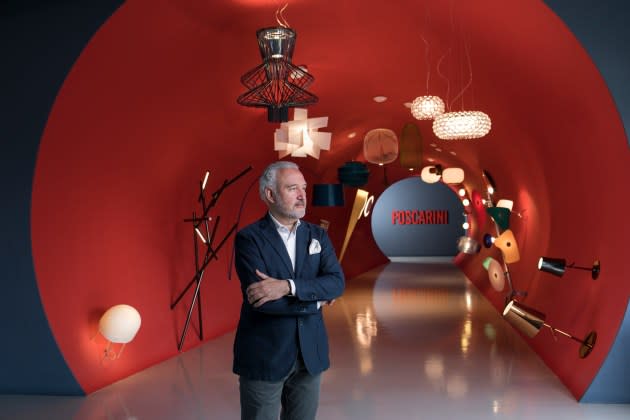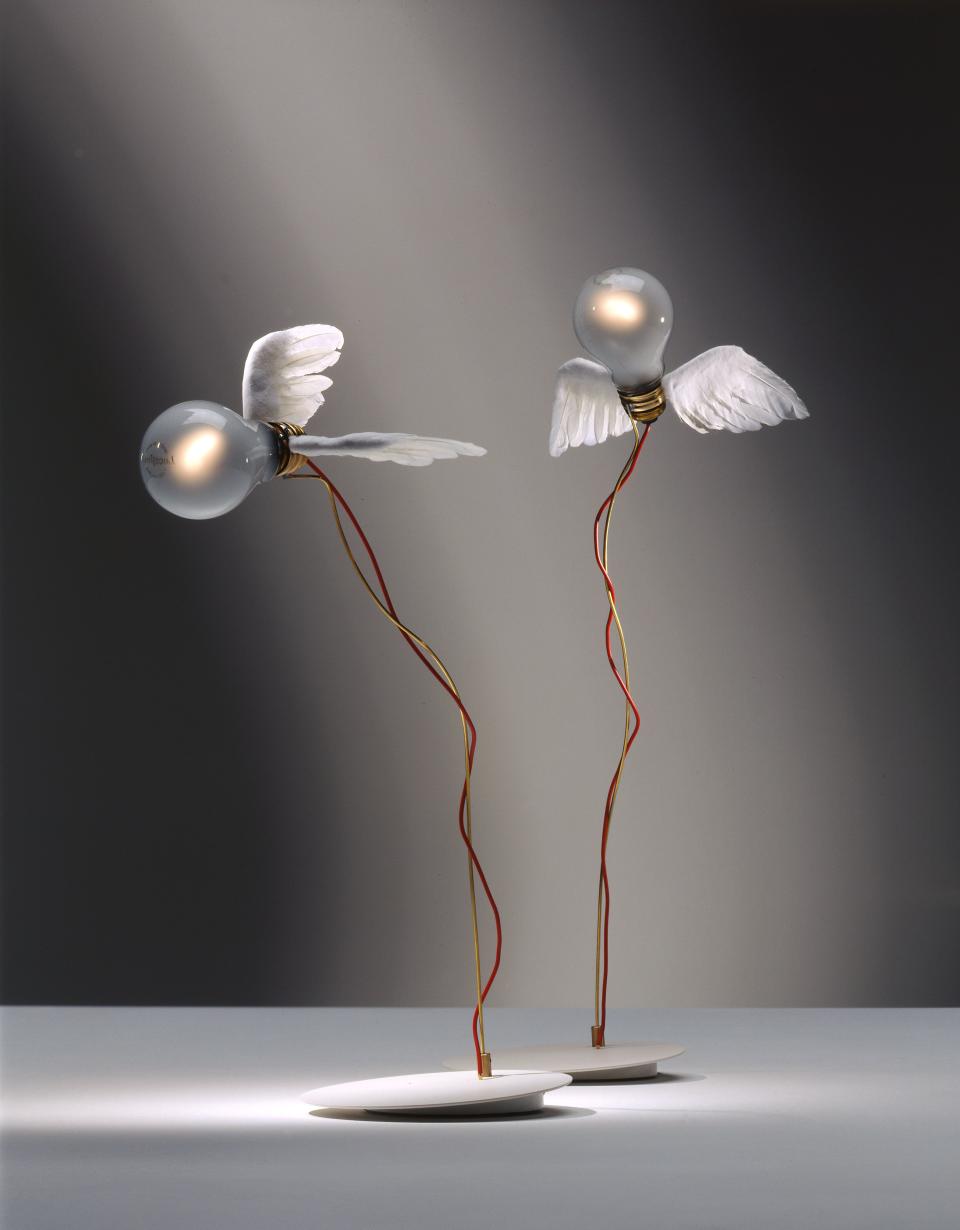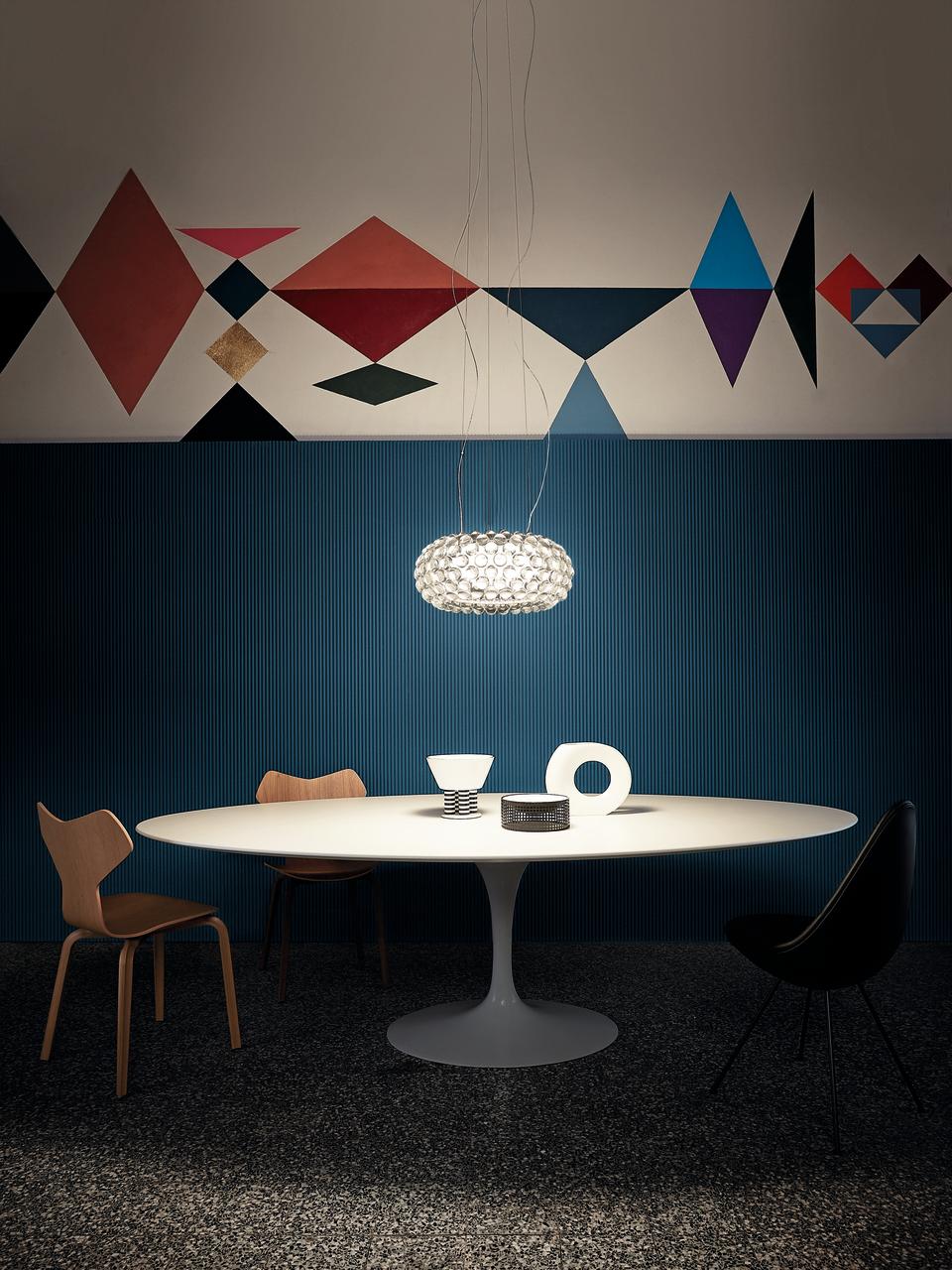Foscarini’s President Reflects on Its Future With Ingo Maurer
- Oops!Something went wrong.Please try again later.

MILAN – As Veneto-based Foscarini puts the finishing touches on the 40th birthday anthology of its contemporary lighting history, the company is focused on strengthening its role in the field of decorative lighting on a global level with the first new jewel in its crown.
Carlo Urbinati, president of Foscarini, told WWD that the company is ready to revitalize Ingo Maurer’s business in the North American market and further penetrate Asia and Europe with the designs of Ingo Maurer GmbH. Foscarini bought 90 percent of the envelope-pushing, Munich-based company in 2022, with 10 percent retained by Maurer’s daughter, Sarah Utermöhlen.
More from WWD
Ingo Maurer, revered as a “poet of light” by many, rose to fame in the ’60s, when his Bulb lamp caught the eye of American designer Charles Eames. Bulb eventually became a part the New York Museum of Modern Art’s collection. Born in Germany in 1932, Maurer developed a fascination with technology and worked at a newspaper for a short stint. In the ’60s he also lived in San Francisco, where he discovered Pop Art, before opening his own company with which he would later disrupt concepts of traditional design. An example is the 1984 YaYaHo model featuring a series of lights that dangled like jewels and Lucellino, suspended bulbs fashioned with feathers.

One certainty, Urbinati said, is that the company does not want to mess with the endeared Ingo Maurer identity but rather support the growth and development of the brand in international markets.
“Foscarini wants the story of Ingo Maurer to continue to be told around the world. The works of Ingo Maurer will not enter the Foscarini portfolio: the two companies will maintain their own creative identities and their DNA will remain well separated,” Urbinati said. He entered Foscarini in 1981 as a designer and then acquired it in 1988.
Foscarini was founded in 1981 on the island of the glass hub of Murano but today it is based in Marcon, Italy, just outside Venice. Despite having 63 families of lamps under its umbrella, it entrusts the production of its lamps to Italian companies and suppliers with the modern vision, materials, technology and know-how to adapt to each object. After joining the firm, Urbinati propelled the company into a modern age both in terms of creative vision and materials, by steering it away from using Murano glass in 1992 with Italian designer Ferruccio Laviani’s first lamp, Orbital, made using industrial glass.
The following year, in 1993, the Havana lamp by Jozeph Forakis was made with polyethylene. Alternative materials met the needs of a new generation with their more modern, compact urban spaces and living ideas. Foscarini has collaborated with more than 30 designers, including some of the biggest names in design, such as the late Rodolfo Dordoni for the Lumiere lamp, Marc Sadler for the Twiggy lamp and Patricia Urquiola for the Caboche, just to name a few.
The death of Dordoni last August was a big blow to Foscarini, Urbinati said. “Rodolfo was a really focused guy, able to understand what was moving and what was next. So it is not only because of the products he made, but because of his sensitivity. It is a great loss for us.”
Looking to the future, however, Urbinati’s mood lifted when speaking about Foscarini’s work with 29-year-old Danish designer Felicia Arvid, who envisaged the Pli pendant lamp (her first lighting project) and won the Compasso d’Oro design award in 2022. Arvid, he noted, started her career in fashion and dressmaking. “It’s been interesting because of her different approach,” he said, reflecting on fashion’s imprint on other creative industries.
Overall in 2023, sales growth in the U.S. and the North America markets was positive, despite a market-wide slowdown in furnishings and lighting following the COVID-19 pandemic-spending boom. “It’s a really strange situation. In Europe we were not generally positive, but in Italy, we were positive. We are very positive in Japan. We are very bad in China. There is no red line connecting all of these performances,” he concluded.
On a commercial level, Foscarini collections are distributed in more than 88 countries through 2,800 multibrand stores and two flagships: Foscarini Spazio Monforte in Milan and Foscarini Spazio SoHo in New York. The U.S. market, Urbinati said, represents about 10 percent of its total. The idea is to expand through the internet, referencing the trajectory of Northern California-based Lumens, a premier online destination for modern lighting, furniture and decor and which sources more than 350 global design brands.
“We are not opening new brand flagship stores. We will instead increase the Ingo Maurer brand presence in North America through physical dealers and third-party online players,” he said.
Looking to the future, Urbinati has always been focused on the evolution of design. So much so that when asked, “What is your favorite model?” he invariably answers: “The next one.” With the acquisition of Ingo Maurer, Foscarini has the chance to expand its creative realm and become a reference for the lighting industry, which the firm plans to outline in its anniversary publication expected to be released in April during Milan Design Week.
“[Altering Ingo Maurer] would be like taking an excellent red wine and an excellent white wine which, if mixed, lose their value. This is an exclusively industrial, not a financial, operation that will allow Foscarini to enhance the point of view and the aesthetic language of one of the greatest interpreters of decorative lighting in history.”

Best of WWD

